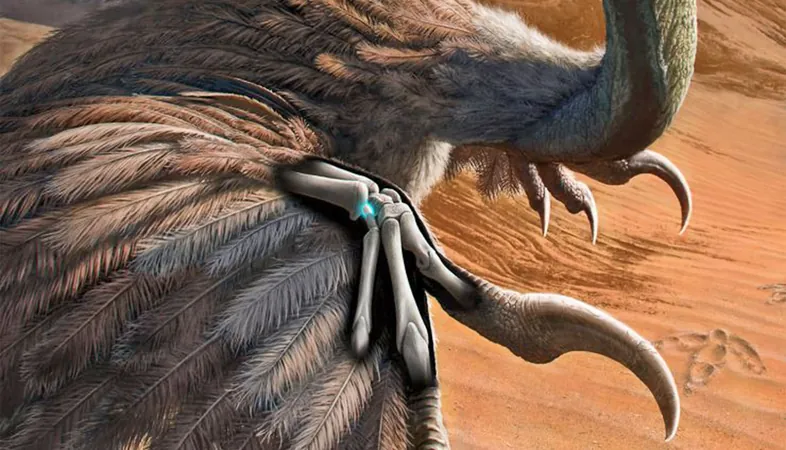
Revolutionary Dinosaur Discovery Could Change Everything We Know About Flight Evolution!
2025-07-15
Author: Wei
A groundbreaking discovery in the world of paleontology could turn our understanding of flight evolution on its head! Researchers have identified a pivotal carpal bone in the wrists of theropod dinosaurs that may shed new light on how flight developed in these ancient creatures.
Led by James Napoli from Stony Brook University, the research team uncovered this intriguing finding while analyzing two fossilized theropods, revealing the presence of the pisiform bone—a crucial component in the wings of modern birds.
Challenging Long-Standing Theories!
This revelation challenges previous beliefs that theropods did not possess a bird-like pisiform. The study, published in the journal *Nature*, suggests that the evolution of flight might have been "all in the wrist," pointing to a more complex anatomical development than once thought.
For years, the nature of the wrist bones in birds remained a mystery. It was only recently confirmed that the pisiform, originally a sesamoid bone like a kneecap, migrated to replace another bone (the ulnare) in the wrist, significantly enhancing the aerodynamics of bird flight.
The Importance of the Pisiform!
The unique structure of the pisiform, featuring a distinctive V-shaped notch, is critical for birds to clasp their wing bones and prevent dislocation during flight—a vital adaptation in the evolution of avian mechanics. This makes the discovery of a migrated pisiform in non-avian theropods an exciting glimpse into their evolutionary past.
An Insight into Prehistoric Flight!
The analyzed fossils belonged to a troodontid—a bird-like raptor akin to the Velociraptor—and an oviraptorid, a peculiar, toothless omnivore with a long neck. Thanks to exquisite preservation combined with advanced high-resolution CT scanning, researchers were able to isolate and visualize these wrist bones in stunning detail.
Napoli noted, "This is the first identification of a migrated pisiform in a non-bird meat-eating dinosaur. The timing of this adaptation suggests that the experimentation with flight began only after the pisiform settled into its joint, hinting at a possible evolutionary pathway toward the flight mechanisms seen in modern birds."
Connecting the Dots in Evolution!
The researchers framed their findings within a broader evolutionary context, positing that the evolution of the pisiform's position occurred within the theropod lineage known as Pennaraptora. This group, which includes iconic dinosaurs like the Velociraptor and others displaying early bird-like features, represents a critical link in the evolutionary chain leading to flight.
Napoli and his colleagues elaborated that their findings indicate the replacement of the ulnare by the pisiform dates back much deeper in theropod history than previously understood. This process highlights a gradual evolution of distinct avian traits such as lightweight bones, enhanced brain size, and feathers—all markers of modern birds.
What’s Next for Flight Evolution Research?
With this monumental discovery, the research community is abuzz with excitement about what it might unveil next. As scientists delve deeper into the anatomical structures of dinosaur wrist bones, the potential for uncovering the mysteries of flight evolution in dinosaurs continues to grow, promising to reshape our understanding of how these incredible creatures took to the skies.

 Brasil (PT)
Brasil (PT)
 Canada (EN)
Canada (EN)
 Chile (ES)
Chile (ES)
 Česko (CS)
Česko (CS)
 대한민국 (KO)
대한민국 (KO)
 España (ES)
España (ES)
 France (FR)
France (FR)
 Hong Kong (EN)
Hong Kong (EN)
 Italia (IT)
Italia (IT)
 日本 (JA)
日本 (JA)
 Magyarország (HU)
Magyarország (HU)
 Norge (NO)
Norge (NO)
 Polska (PL)
Polska (PL)
 Schweiz (DE)
Schweiz (DE)
 Singapore (EN)
Singapore (EN)
 Sverige (SV)
Sverige (SV)
 Suomi (FI)
Suomi (FI)
 Türkiye (TR)
Türkiye (TR)
 الإمارات العربية المتحدة (AR)
الإمارات العربية المتحدة (AR)